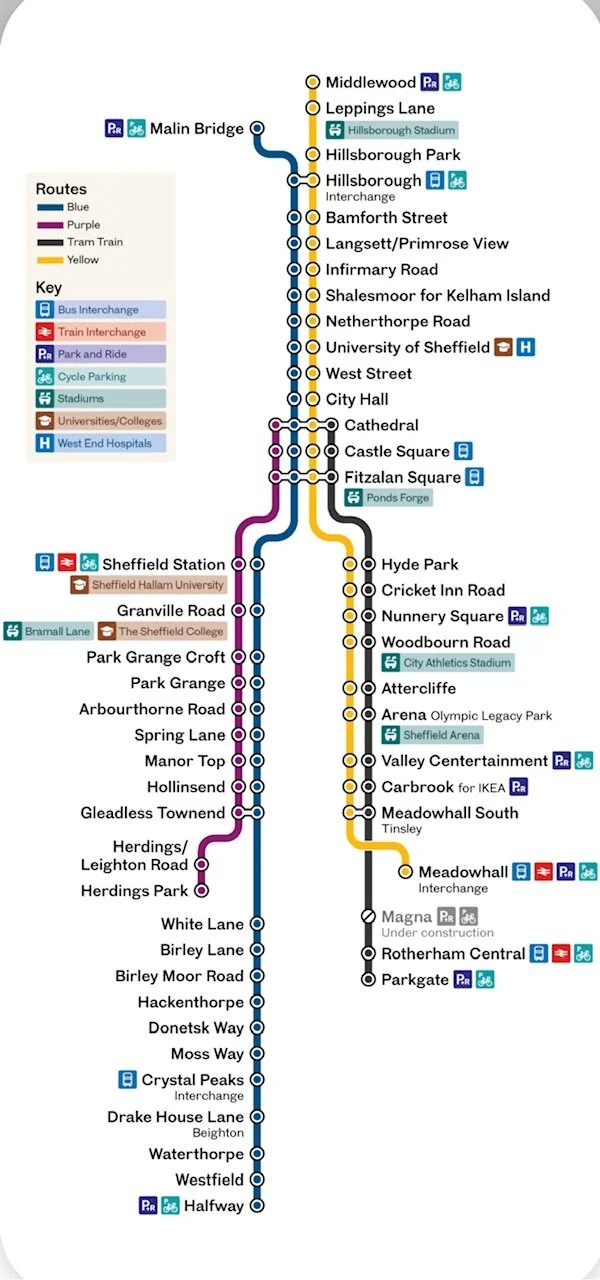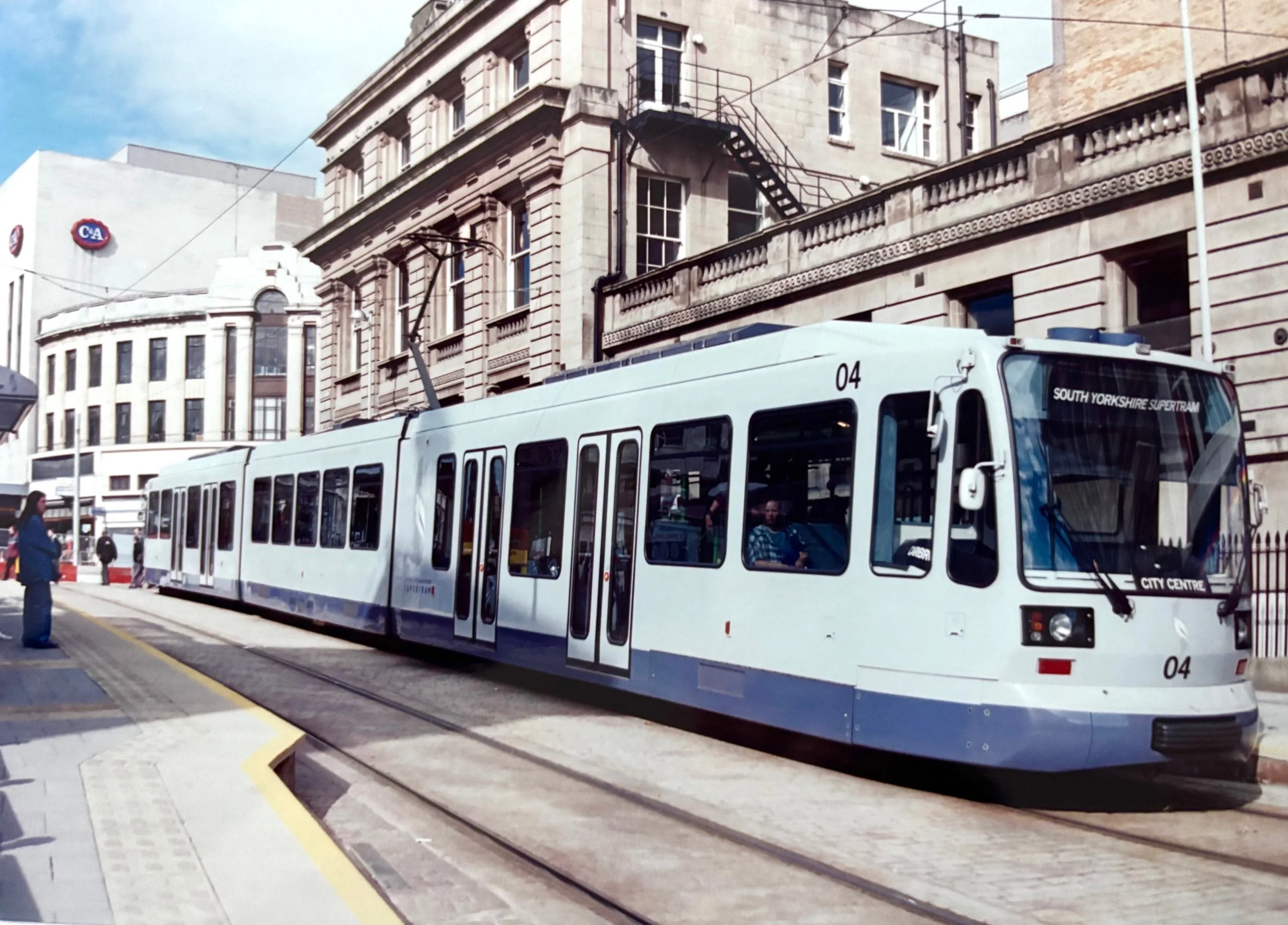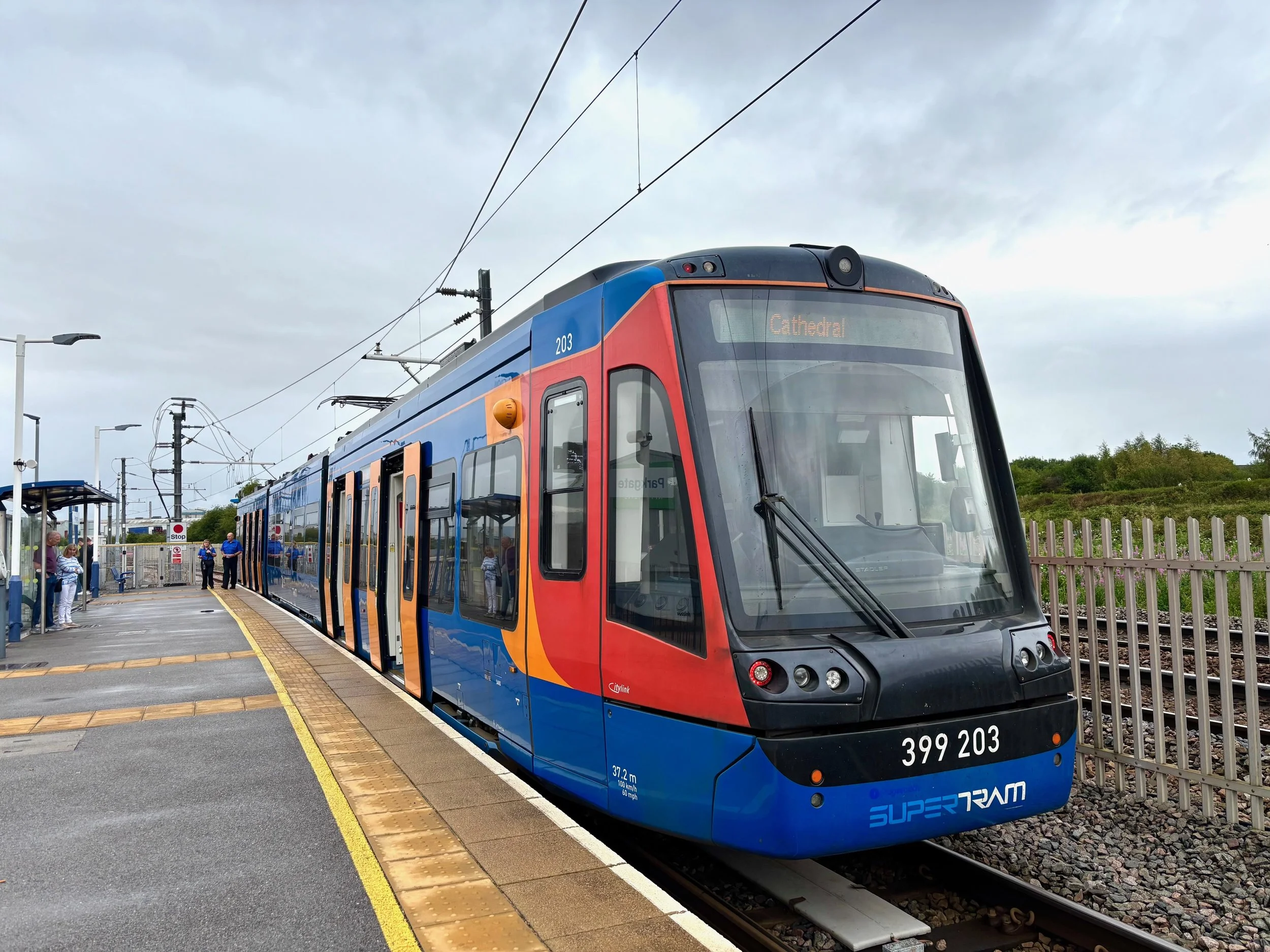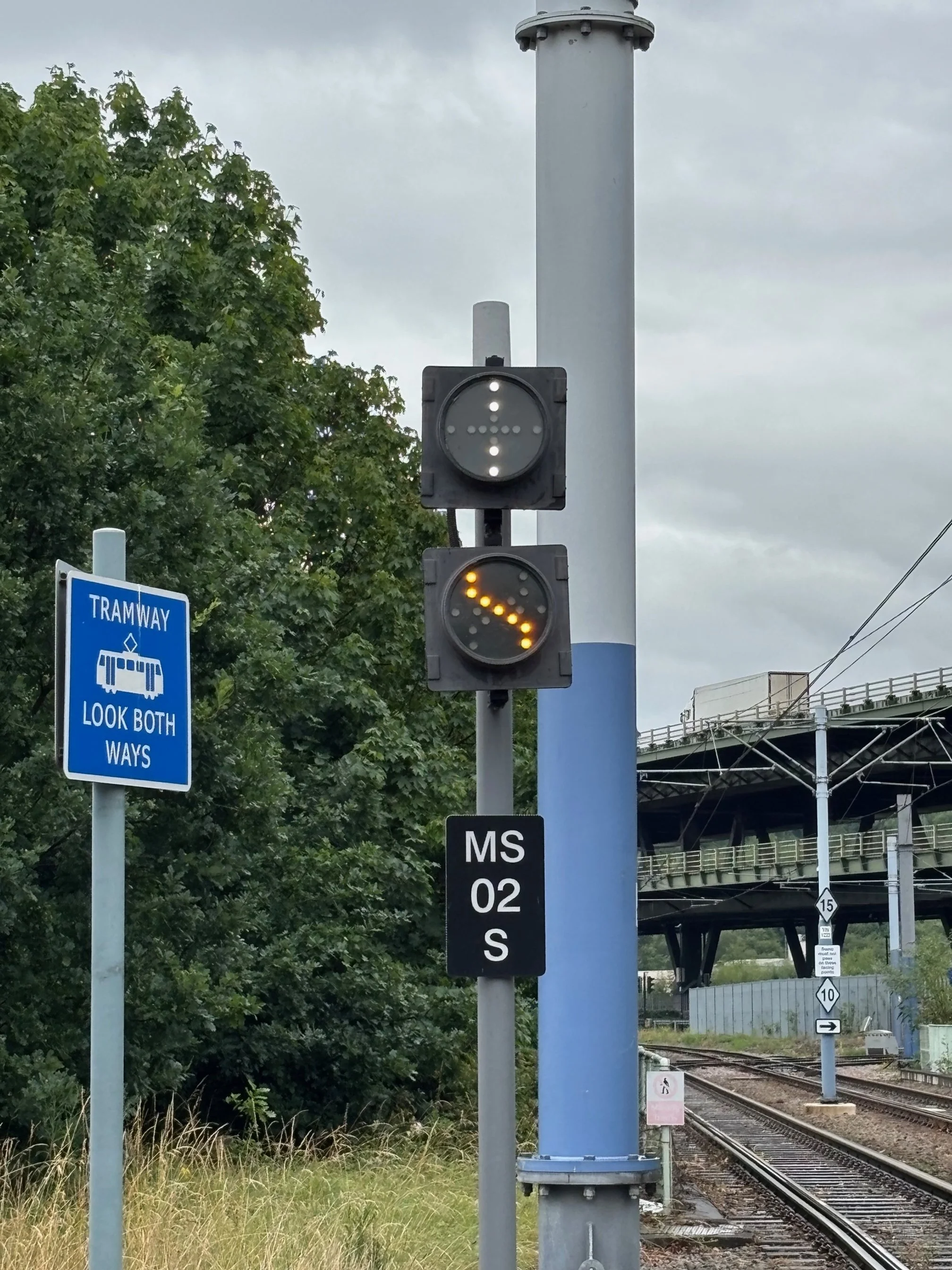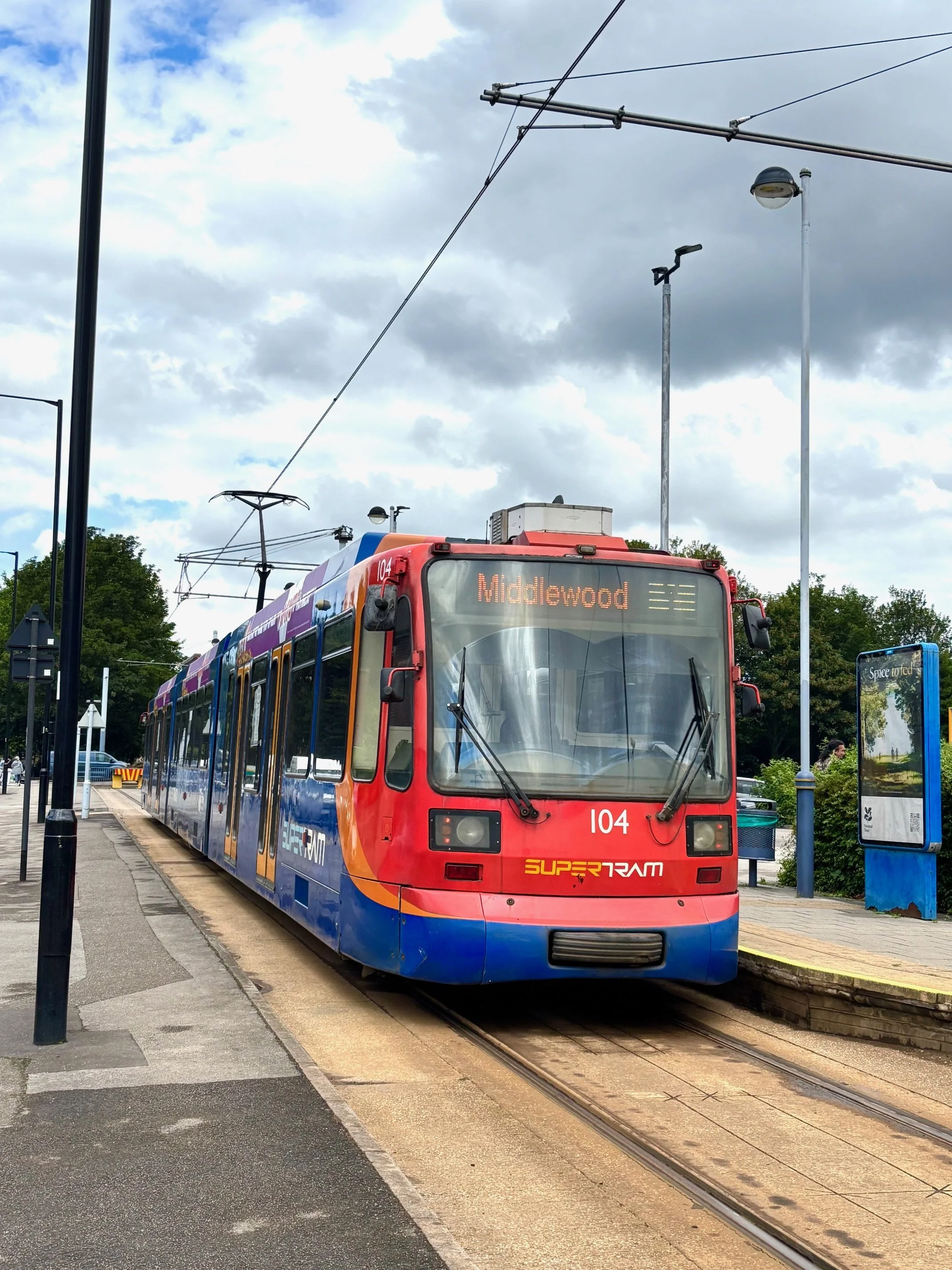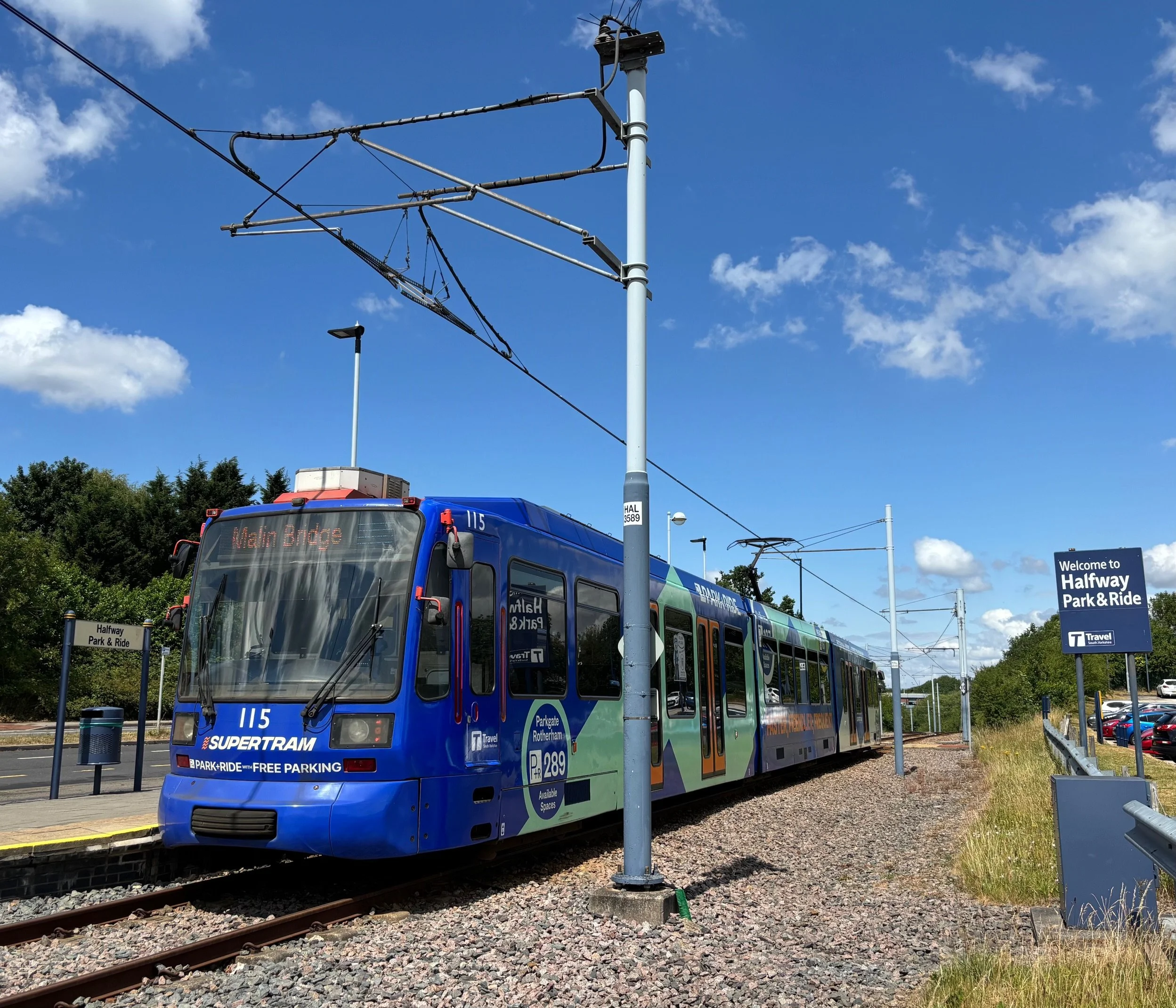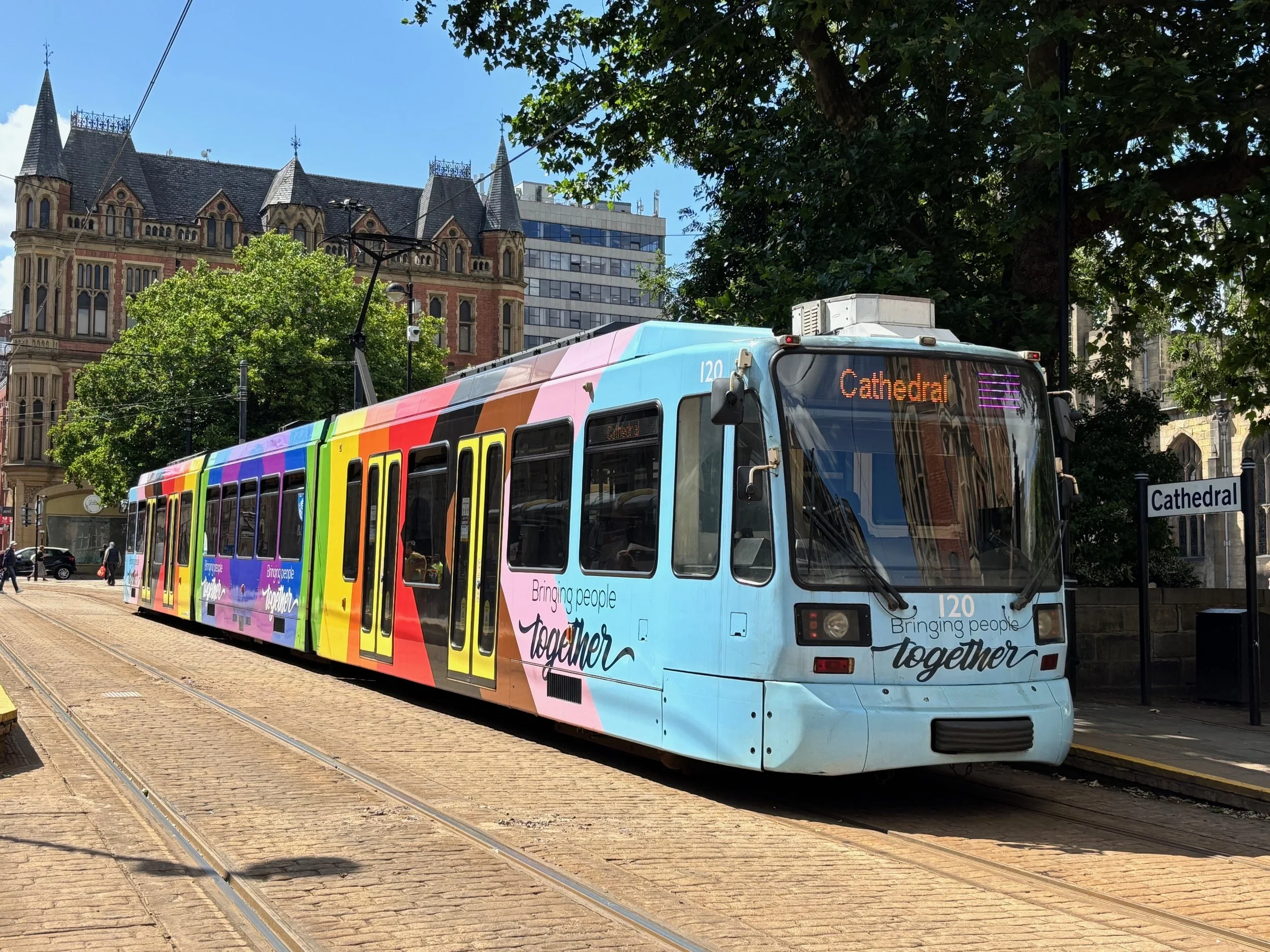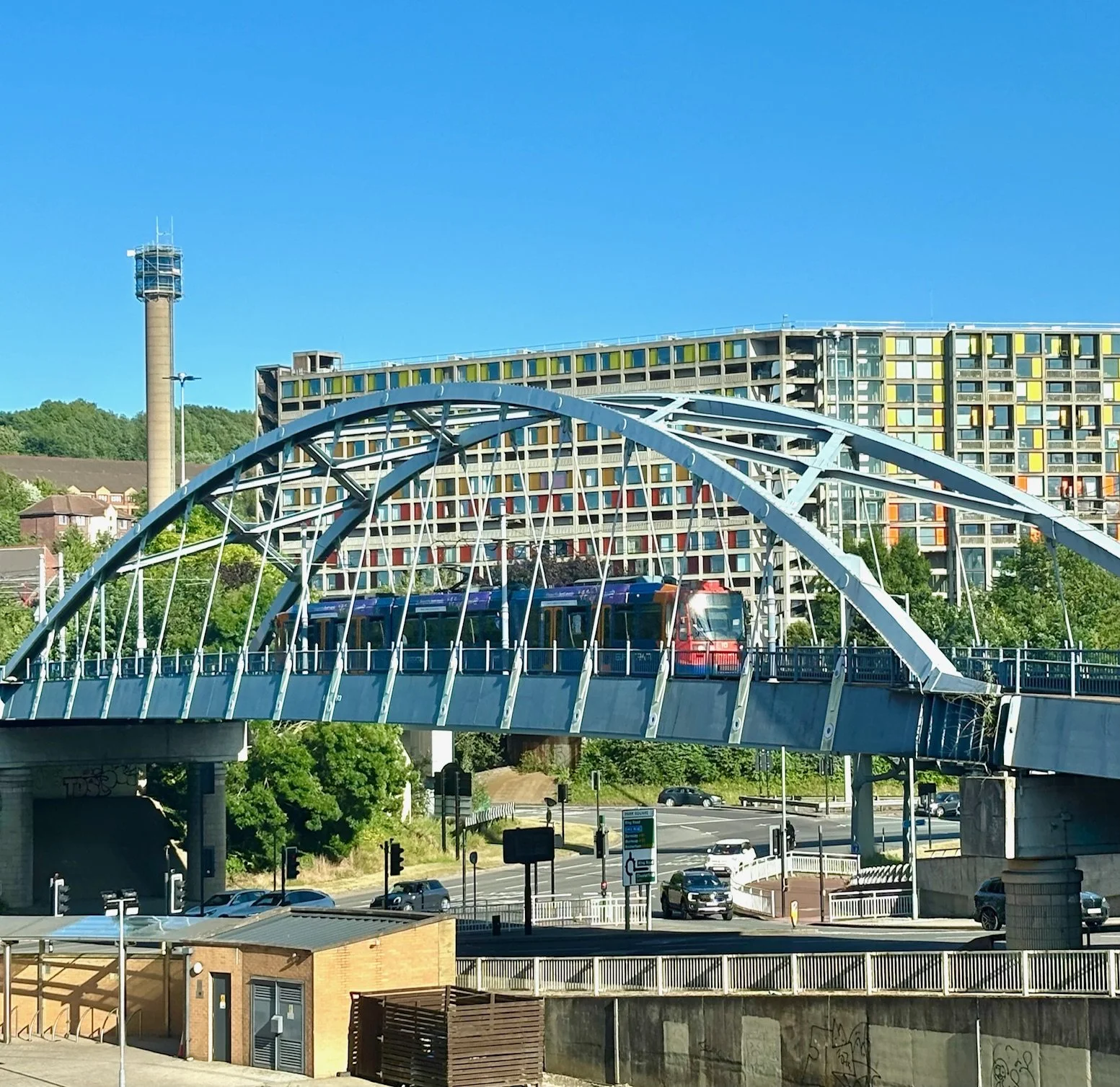Super Trams in Sheffield
In the second of this series from South Yorkshire, Watton’s Wanderings tries out a Tram Train to Rotherham and rides the Sheffield Supertram network.
Sheffield Supertram Diagram showing the four routes - Blue, Purple and Yellow being the original lines and the Tram Train shown in black.
Interchanges with Buses, Trains and Park & Ride locations are shown, together with Stadiums, Universities and Hospitals.
Sheffield Supertram
In common with other British cities, Sheffield had disposed of its original trams, in this case in 1960. However, the city was at the forefront of the re-introduction of modern trams at the end of the 20th Century, when a new network was opened in stages between 1994-95, incorporating former heavy rail sections together with new track. Originally operated by the South Yorkshire PTE, the system was privatised to Stagecoach in 1997, although the concession ended in 2024 and the network returned to public ownership under a company owned by the South Yorkshire Combined Mayoral Authority. A fleet of 25 Siemens-Duewag low floor trams was introduced at the start and still continues in service.
The first stage of the Sheffield Supertram opened in 1994, at which time tram no 04 in original livery is seen at the Fitzalan Square terminus in the city centre.
This was my first visit to the system, which at that time ran between this point and Meadowhall / Spring Lane only. I returned after the remaining stages of the network opened in 1995.
Tram Train: Cathedral to Rotherham Parkgate
In the 2010s, an experimental trial was planned to operate the first Tram Trains in the UK, over a route from Sheffield Cathedral to Rotherham, using the existing tram tracks to Meadowhall and then over Network Rail lines. A purpose-built fleet of Class 399 Stadler Citylink tram-trains was finally introduced in 2018, although various operational problems caused the service to be suspended on occasions.
I began at Cathedral, heart of the tram network and the central terminus of the Tram Train, designated “TT” on departure screens. The timetable indicates 2 trains an hour on the service, but at 27/33 min intervals on M-S, only a more regular 30 mins on Suns. Not a memorable frequency, but presumably this is to fit in with train times on the Network Rail section of track. Tram Train 399 203 was next to arrive, the “TOPS” code necessary due to running over normal railway lines for part of the journey. This is one of 7 such units, which seems extravagant, given that only 2 are needed for the normal service.
Almost as soon as I settled in my seat immediately behind the driver’s cab to observe proceedings, the conductor appeared and sold me a Tram Day Ticket for £5.70, valid on all routes. Then we were off and made our way over the street section of track calling in quick succession at Castle Square and Fitzalan Square. It was then over the bowstring bridge above a large roundabout to the “T” junction where the routes to Meadowhall/Rotherham and Halfway/Herdings Park diverge in opposite directions to left and right.
The next section follows a former heavy rail route and is shared with the Yellow route Tram. Soon we were passing the Nunnery Supertram Depot, with a variety of vehicles on view in the yard. We called at all stops to Meadowhall South, where the two routes part company. The Yellow route continues straight ahead, but we took the right hand curve to join up with the Network Rail line. After clearing the points, we paused briefly whilst our driver re-set the controls to move from “line of sight” to standard railway signalling systems.
Continuing at slow speed, we passed the first “normal” railway signal and began to accelerate. At Magna, a blast on the horn to warn workers building the new Tram Train stop at this location, before continuing on along the line to Rotherham Central. Here, we stopped at a new low level platform, built in advance of the higher existing railway one. Most passengers alighted here, with just a few continuing with me on the final mile or so to the terminus at Parkgate, where there is a low bay platform beside the main line, although normal trains do not stop here. Just 25 mins for the trip.
One of the fleet of 7 Class 399 Stadler Citylink Tram Trains stands at the Rotherham Parkgate terminus, adjacent to the Network Rail tracks on the right.
Like the other trams, these vehicles are crew operated, with the driver and conductor visible at the end of the platform. There are no self-service ticket machines on the network, although conductors serve the full range of tickets and can take card or cash.
Tram Train: Rotherham Parkgate to Meadowhall South
Parkgate serves a few industrial units and nearby housing on the outskirts of Rotherham Town Centre, but seems a slightly incongruous terminus, not really a major traffic objective. Maybe the route will be extended further in due course.
After the short break of around 7 mins, I reboarded for the return run, this time sampling the low floor section in the centre of the three-part unit. A quick run back to Rotherham Central, where we picked up a good load, before continuing to the junction between Network Rail and Supertram, marked by a sign indicating that the driver should switch back to “Line of Sight” operation.
I alighted at the next stop, Meadowhall South/Tinsley, after a 10 min ride, crossing the tram tracks to await the next departure for Meadowhall Interchange.
Meadowhall South is where the Tram and Tram Train routes diverge. The signal and points are shown set for the route to Meadowhall Interchange.
The junction for Rotherham is seen to the right, after which Tram Trains switch from line of sight to Network Rail signalling just under the M1 flyover above.
Yellow Line: Meadowhall South - Meadowhall Interchange - Middlewood - Hillsborough
I had ridden the original Supertram network when it first opened in 1994/5, but not since, so this was my first return for 30 years!
A fleet of 25 Siemens-Duewag three-part trams operates on the three original lines and fleet no 104 arrived on the next northbound Yellow Line departure, bearing the standard red, blue and orange livery, inherited from Stagecoach times. Just a 3 min ride one stop to the terminus at Meadowhall Interchange, swinging through 90 degrees to end beside the Network Rail station on one of two separate terminal platforms. The Yellow Line operates every 12 mins M-S daytimes, every 20 mins Sun daytimes and every 30 mins evenings Daily.
I stayed with the same tram, changing ends and continuing with it when it departed. We retraced our steps back to the city centre, calling at the various stops serving the leisure complexes and sporting arenas in the Olympic Legacy Park area. Passing once again over the bowstring bridge, we entered the street running section of track, up to the Cathedral and beyond. Calling at stops serving the City Hall and University amongst others, we moved along the road with the buses and other traffic to Hillsborough, where there is a transport interchange at the start of the High Steet.
Continuing onwards, we passed Hillsborough Park to our right and called at Leppings Lane, the nearest stop to Hillsborough Stadium, home of Sheffield Wednesday Football Club, but probably remembered unfortunately as the site of the worst tregedy in English sporting history in 1989 when nearly 100 fans were crushed to death. However, the report following the disaster did lead to improvements in safety at grounds across the country, including the introduction of all seater stadiums.
After a 42 min ride, the tram ended at the following stop, Middlewood, where a large Park & Ride Car Park adjoins the terminus.
I rejoined the same tram again after the break and returned just 3 stops to Hillsborough Interchange, a 5 min journey, where I alighted.
Siemens-Duewag Supertram no 104 at the Yellow Line terminus of Middlewood, where there is a Park & Ride facility to the right.
This set is in the standard red, blue and orange livery. Note the “Y” on a yellow background to the right of the destination screen indicating the line colour.
Blue Line: Hillsborough - Malin Bridge - Halfway - Gleadless Townend
Crossing the road at Hillsborough, I switched to the Blue Line, which operates over a short branch just one stop to Malin Bridge from this point. My journey aboard tram no 114 took a mere 2 mins! This vehicle was in a special blue based livery advertising the Park & Ride opportunities available on the network. However, this was the precursor to the longest tram ride on the system, from Malin Bridge to Halfway, which takes nearly an hour. The frequencies are the same as the Yellow Line described earlier, meaning over the common section with the Blue Line there is a tram every 6 mins M-S daytimes, 10 mins Sun daytimes and 15 mins evenings.
Leaving Malin Bridge terminus just a short distance from Hillsborough Town Centre, we made our way back to the Interchange and on via the shared road section to the city centre. Continuing over the bowstring bridge, this time we turned sharp right along a viaduct section above Sheffield Railway Station, where there is a tram stop. After this, the route becomes quite hilly, with the initial tram only viaduct giving way to more “on road” running through the suburbs. At Gleadless Townend, the Yellow Line swings sharp left and we finally entered a more countrified section, firstly along the road but then diving off on segregated tracks through the woods to Birley Lane. From here, on a mixture of on road and beside road tracks were traversed, the main intermediate location served being Crystal Peaks, where there is a large shopping centre and Bus Station. The final stretch up to the terminus at Halfway was alongside the road on segregated double tracks. 58 mins in all.
Halfway has a large Park & Ride Car Park to one side and a small bus interchange on the other, also serving nearby new housing. I caught a subsequent departure aboard tram no 110, which was fairly quiet until on approach to Birley Lane we encountered a car which had broken down diagonally across the tracks where the tram leaves the road for a segregated section. There was nothing for it but to get out and push the offending car clear of the tracks, with help from the tram driver and three guys who saw what had happened from an adjacent car park!
After 5 mins delay and a report from the tram driver to the control room on what had caused the problem, we continued and I got off at Gleadless Townend after an eventful 20 min trip, at the junction with the Purple Line.
Another Supertram, no 115, at the eastern end of the Blue Line, which terminates at Halfway. The Park & Ride Car Park can be seen on the right hand side.
This tram bears a special livery extolling the virtues of the various Park & Ride sites.
Purple Line: Gleadless Townend - Herdings Park - Cathedral
To complete the set, I just had the Purple Line left to ride. This is less frequent than the others, mainly paralleling the Blue Line from Cathedral to Gleadless Townend and then taking a short branch of just a couple of stops to Herdings Park. It appeared that one tram was operating on the Hourly M-S frequency, which increases to every 30 mins on Sun daytimes, presumably when there are more visitors to the delights of the parkland area.
I had about 15 mins to wait for the next Purple departure, which was formed of tram no 120 in a multi-coloured rainbow livery for “Bringing People Together”. Just a few of us on the short 5 min ride to the end of the line, continuing straight along the main road for a short way before diving off along the edge of Herdings Park to the terminus, set amongst the trees and grassland.
I rejoined the same tram after a break of just under 10 mins for the run back to the city. Only a handful at first, but busier once we joined up with the “main” Blue Line. A 25 min journey downhill, along the viaduct and back over the bridge to the city centre, terminating where I had begun my rides back at the Cathedral.
Tram no 120 at the Cathedral terminus of the Purple Line, wearing a rainbow livery for “Bringing People Together” at the conclusion of my rides on the system.
Sheffield Cathedral can just be seen through the trees on the right.
We end with a view of Siemens-Duewag Supertram 113 on the bowstring bridge to the east of the Fitzalan Square / Ponds Forge stop in the city centre.
To the left, just over the bridge, there is a “T” junction, where the lines to Meadowhall and Halfway diverge, just visible to the left of shot.
Watton

